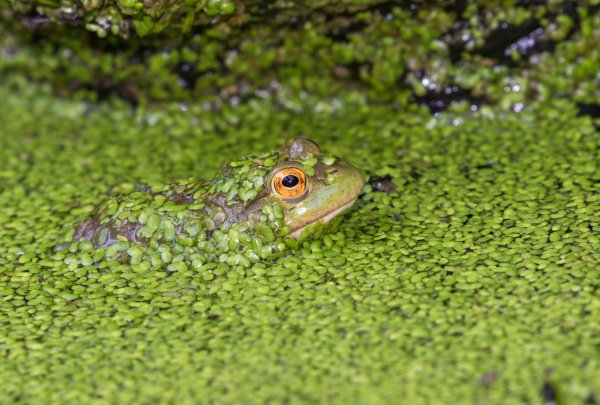
Due to climate change and market volatility, it is necessary that humanity wean itself from fossil fuels, which are currently used for the production of electricity, refined fuels, and many commodities. As an alternative, the use of biomass (such as corn stover, sugarcane, switchgrass, microalgae, etc.) as a carbon-neutral and renewable feedstock is gaining in popularity. Lemnaceae (duckweed), a group of fast-growing, floating aquatic plant species, has shown promise as a biofuel feedstock through both thermochemical conversion into syngas and fermentation into ethanol; however, the potential for duckweed to be anaerobically digested into carboxylic acids, which are precursors of higher-value chemicals and biofuels, remains unexplored. In addition, the potential synergies, and ecological benefits of growing polycultures of duckweed to maintain high starch contents over a range of environmental conditions that are representative of different types of wastewater streams have not been examined.
By integrating ecological wastewater treatment systems containing duckweed with on-site bioconversion facilities for the harvested biomass, efficiencies can be increased even further by reducing transportation costs and emissions. The overarching goal of this research is thus to simultaneously improve water quality and enhance energy security through full-circle wastewater treatment by absorbing nutrients from wastewater into duckweed biomass and then exploiting that biomass as a valuable biofuel feedstock. To meet this goal, a series of duckweed growth tests will be used to elucidate the mechanisms governing the ability of duckweed to sequester nutrients from wastewater, accumulate starch, and produce carboxylic acids during anaerobic digestion. The data derived from these tests will inform life cycle assessment modeling, which will then be used to determine best management practices that optimize the use of duckweed as a biofuel feedstock. This research is particularly relevant to meeting three of the Grand Engineering Challenges for the 21st Century, namely: providing access to clean water, managing the nitrogen cycle, and restoring and improving urban infrastructure.
Resulting Funding
- Northeast Regional Sun Grant Center, USDA, “Sustainable Biofuel Production from Decentralized Wastewater Treatment Systems: Duckweed as a Diverse and Well-Distributed Feedstock for Enhancing Energy Diversification”, $40,000 (PI: Brennan (80%); Co-PI: Anderson), February 2018 – March 2019.
Resulting Publications
- Calicioglu, O., Shreve, M. J., Richard, T. L., and Brennan, R. A. (2018) “Effect of pH and temperature on microbial community structure and carboxylic acid yield during the acidogenic digestion of duckweed.” Biotechnology for Biofuels, 11:275.
- Calicioglu, O., and Brennan, R. A. (2018) “Sequential ethanol fermentation and anaerobic digestion increases bioenergy yields from duckweed.” Bioresource Technology, 257: 344-348.
- Calicioglu, O., Richard, T. L., and Brennan, R. A. (2019) “Anaerobic bioprocessing of wastewater-derived duckweed: maximizing product yields in a biorefinery value cascade.” Bioresource Technology, 289: 121716.
- Calicioglu, O.; **Femeena, P.V.; Mutel, C.; Sills, D. L.; Richard, T. L.; and Brennan, R. A. (2021) “Techno-economic analysis and life cycle assessment of an integrated wastewater-derived duckweed pond and biorefinery.” ACS Sustainable Chemistry & Engineering, 9: 9395 – 9408. DOI: 10.1021/acssuschemeng.1c02539.
- Calicioglu, O.; Sengul, M. Y., Femeena, P.V.; and Brennan, R. A. (2021) “Duckweed growth model for large-scale applications: optimizing harvesting regime and intrinsic growth rate via machine learning to maximize biomass yields.” Journal of Cleaner Production, 324, 15: 129120. DOI: 10.1016/j.jclepro.2021.129120.


